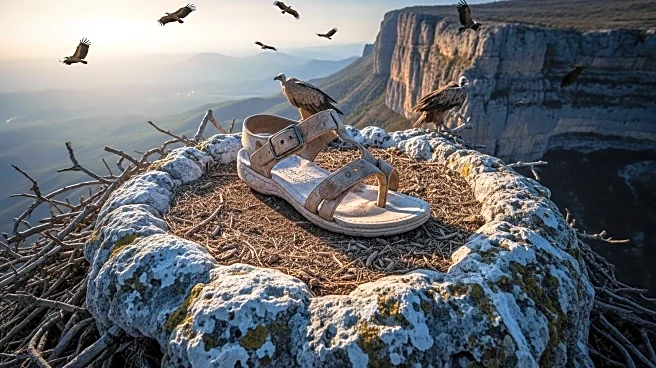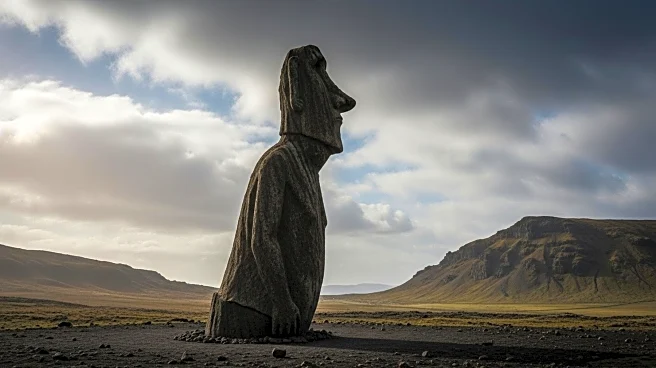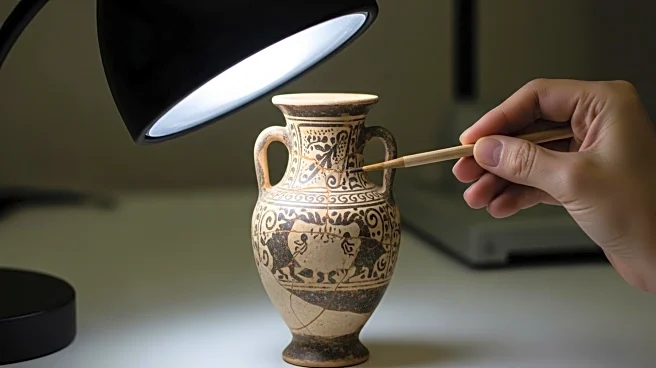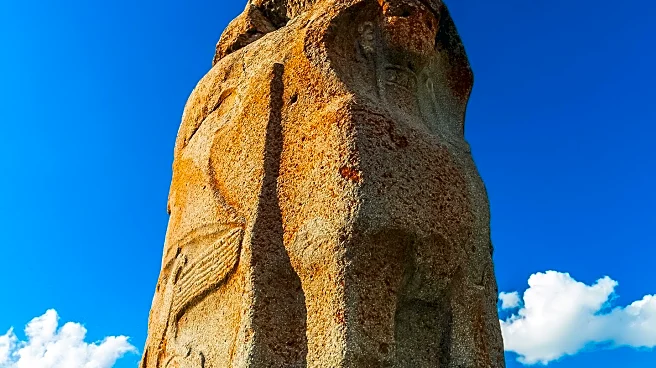What is the story about?
What's Happening?
A team of researchers has uncovered a 700-year-old sandal and other cultural artifacts in the nest of a bone-eating vulture in Spain. The discovery was made during a study of bearded vulture nests on cliffs in southern Spain, conducted between 2008 and 2014. The sandal, made of esparto grass cord, dates back to the 13th century. The nest also contained a fragment of ochre-painted sheep leather from 650 years ago and an 18th-century basketry fragment. Other items found include a crossbow bolt, a wooden lance, a slingshot, and fabric pieces believed to be centuries old. The study highlights the bearded vulture's habit of reusing nests for centuries, transporting objects for nest construction.
Why It's Important?
This discovery provides new insights into the historical interactions between humans and wildlife. The presence of ancient artifacts in vulture nests suggests these birds have played a role in preserving human cultural history. The findings underscore the importance of these sites as quality locations for breeding, used by successive generations of vultures. The study enhances understanding of the bearded vulture's ecological role and its impact on cultural preservation. It also opens up new avenues for research into the interplay between wildlife and human history, offering a unique perspective on how natural habitats can serve as repositories of cultural artifacts.
What's Next?
Further research may focus on exploring other vulture nests to uncover additional historical artifacts, potentially expanding knowledge of human history and cultural practices. Conservation efforts might be influenced by these findings, emphasizing the protection of vulture habitats as valuable historical sites. Researchers may also investigate the ecological significance of vultures in preserving cultural artifacts, leading to broader studies on the role of wildlife in cultural conservation. Collaboration between archaeologists and ecologists could be fostered to explore the intersection of natural and human history.
Beyond the Headlines
The discovery raises ethical questions about the preservation of cultural artifacts found in natural settings. It challenges traditional views on archaeological sites, suggesting that wildlife habitats can also serve as important historical repositories. The study may prompt discussions on the legal protection of such sites and the responsibilities of researchers in handling artifacts found in wildlife habitats. Additionally, it highlights the cultural significance of vultures, often overlooked in conservation efforts, and their potential role in historical preservation.
AI Generated Content
Do you find this article useful?














